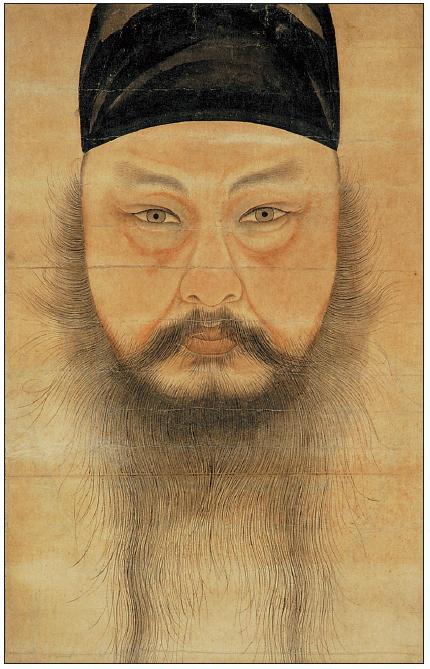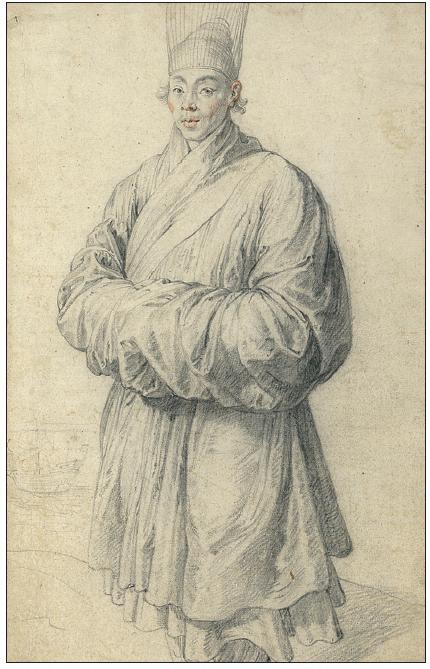More than 200 portrait paintings from Korea, Japan, China, as well as the West are featured at the National Museum of Korea’s biggest portrait art exhibition so far.
Titled “Secret of the Joseon Portraits,” the exhibition showcases some of the most famous portrait paintings of the Joseon Dynasty (1392-1897), including “Portrait of Taejo,” “Portrait of Seo Jik-su” and “Self-portrait of Yun Du-seo,” along with pieces from other time periods and countries. Featured artists include the legendary Joseon painter Kim Hong-do (1745-1806) and the Flemish Baroque painter Peter Paul Rubens (1577-1640).
Titled “Secret of the Joseon Portraits,” the exhibition showcases some of the most famous portrait paintings of the Joseon Dynasty (1392-1897), including “Portrait of Taejo,” “Portrait of Seo Jik-su” and “Self-portrait of Yun Du-seo,” along with pieces from other time periods and countries. Featured artists include the legendary Joseon painter Kim Hong-do (1745-1806) and the Flemish Baroque painter Peter Paul Rubens (1577-1640).

The exhibition is divided into four parts. The first two sections delve into the art produced in Joseon’s royal court, which was deeply inspired and influenced by the strict norms of Confucianism. These paintings reflect the relationship between the king and his followers, as well as the Confucian culture shared by Joseon’s top ranking scholar-bureaucrats.
The third and fourth sections of the exhibition explore how Joseon portraits gradually embrace individuality and innovative style as they break away from tradition. It is interesting to see how the introduction of photography influenced the style of portrait art in the late Joseon period.
Among the featured Joseon portraits, “Self-portrait of Yun Du-seo” is regarded as one of the best examples of Joseon’s powerful works of realism. An extremely detailed work of the Joseon painter’s own face, the piece carries Joseon’s distinctive style of extremely detail-oriented and realistic depiction of their subjects. The painting originally portrayed both the face and shoulder of Yun, but only its head portion remains today.


“Joseon portraits are humble compared to China’s larger scale paintings, and simple compared to Japan’s delicate works,” the museum staff explained in a statement. “They really delved into one’s spirit and soul by depicting each subject as realistically as possible. They didn’t even allow having ‘one thread of hair’ painted incorrectly.”
The exhibition also features “Portrait of a Man Wearing Hanbok,” a 1617 painting by the famous Flemish Baroque painter Peter Paul Rubens (1577-1640). Currently owned by the J. Paul Getty Museum in the United States, the piece has been generating controversy and buzz because of the unconfirmed identity of its subject. In the painting the man is wearing hanbok, traditional Korean garment, and a Korean hat.
According to the museum, the subject is believed to be Antonio Corea, a Joseon-era man taken away by the Japanese as a slave during the Japanese invasions of Korea (1592-1598). It is widely believed that he was later rescued by an Italian priest, who took Corea to Florence with him.
Another theory argues that Corea was in fact a government officer of Joseon who worked for Jacques Specx, a Dutch merchant who worked in Japan from 1606-1621.
Along with the Rubens’ painting, “Portrait of Seo Jik-su,” a piece by painter Yi Myeong-gi (1756-1802) will be displayed. Yi is considered as one of the most prolific portrait artists of the Joseon period.
The exhibition also offers storytelling services to increase the visitors’ understanding of Korean history, featuring the lives of historical features including the Joseon period’s most celebrated naval commander Yi Sun-sin (1545-1598), and famous Joseon official and scholar Jeong Mong-ju (1337-1392).
The exhibition runs from Sept. 27 to Nov. 6 at the National Museum of Korea’s Special Exhibition Gallery. For more information, call (02) 2077-9000.
By Claire Lee (dyc@heraldcorp.com)










![[Hello India] Hyundai Motor vows to boost 'clean mobility' in India](http://res.heraldm.com/phpwas/restmb_idxmake.php?idx=644&simg=/content/image/2024/04/25/20240425050672_0.jpg&u=)








